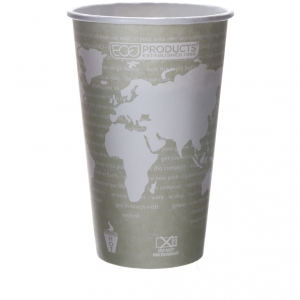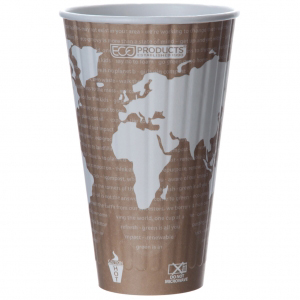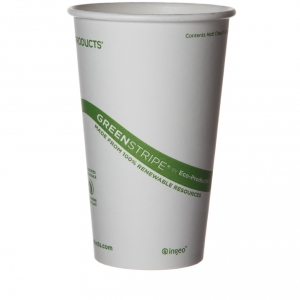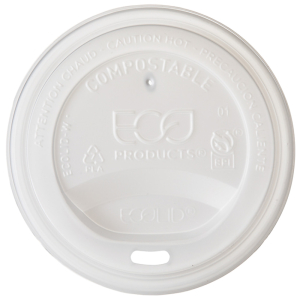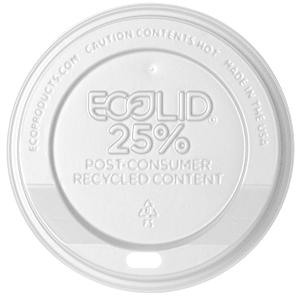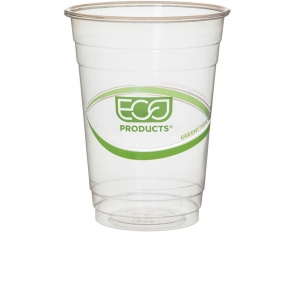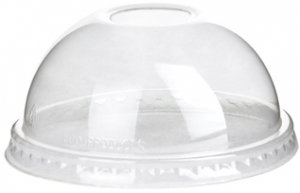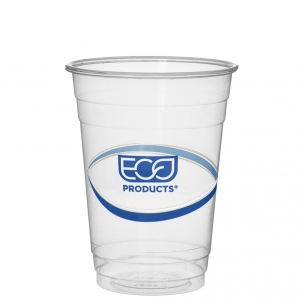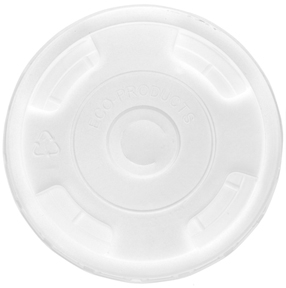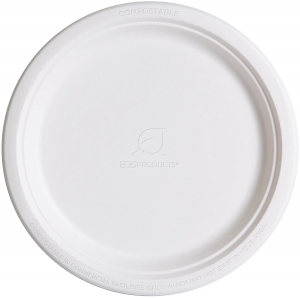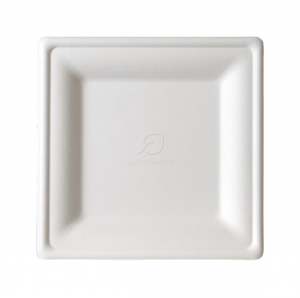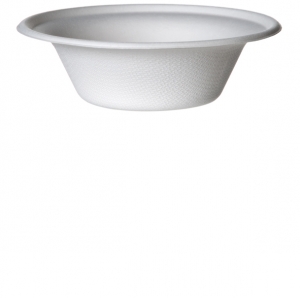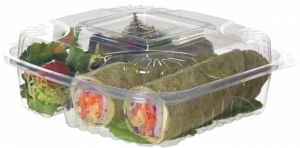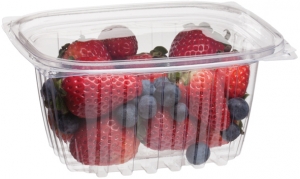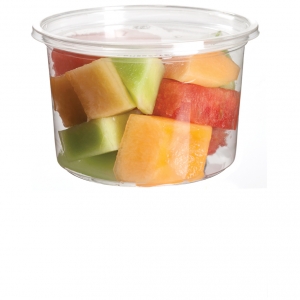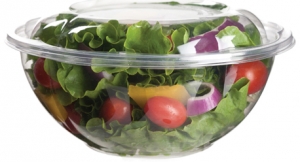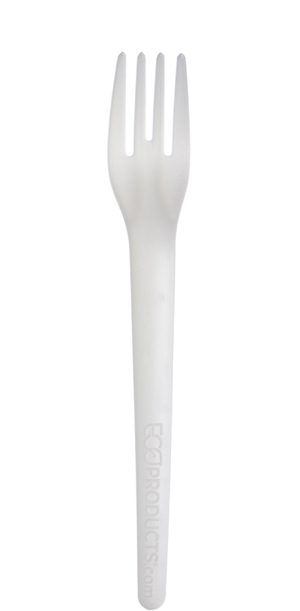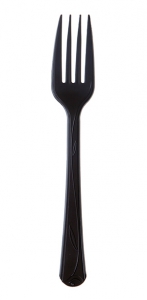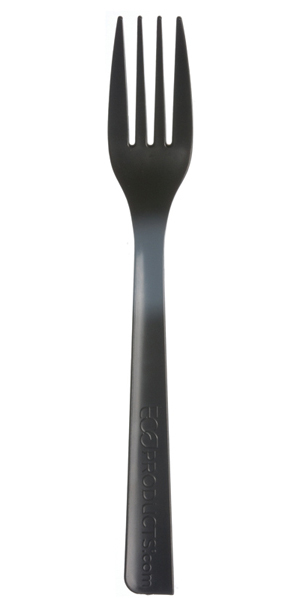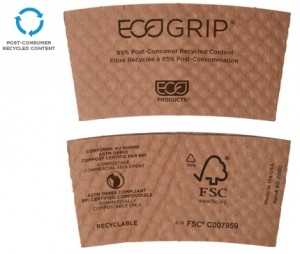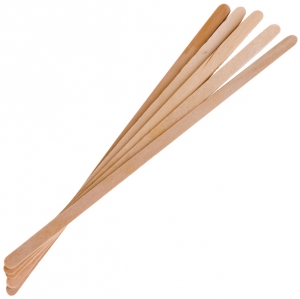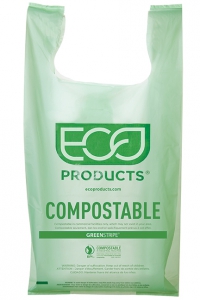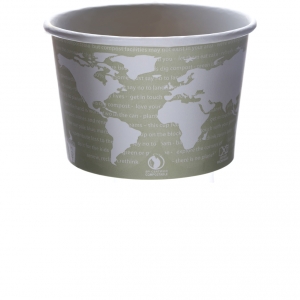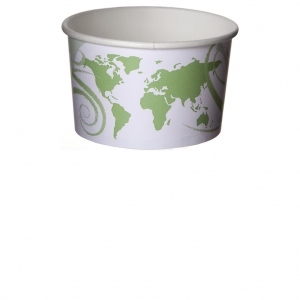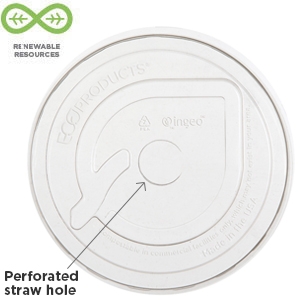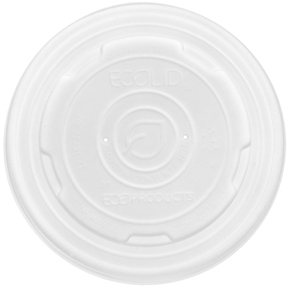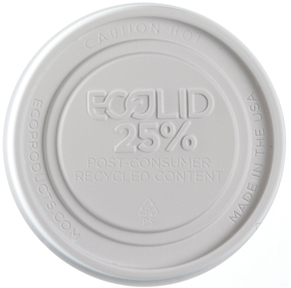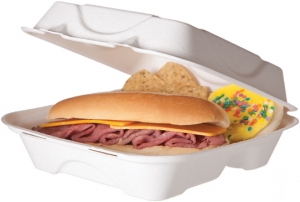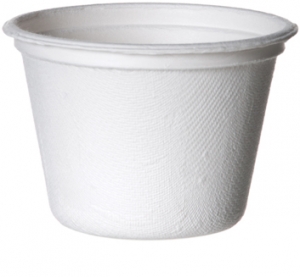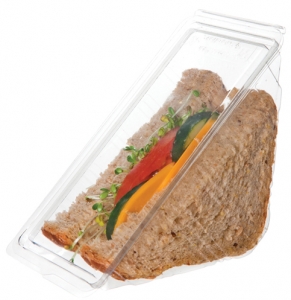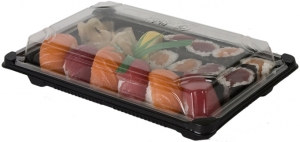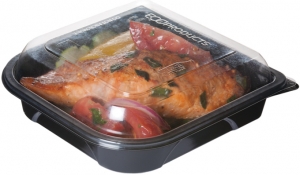PLA
PLA or "corn plastic" is a biopolymer made from polylactic acid (PLA) that can be derived from starchy plants like corn, potatoes, tapioca, sugarcane, and soy protein. In the U.S., PLA is typically made from corn kernels that are milled and processed to extract the starch which is then converted into plastic.
PLA is FDA approved for food contact and well-suited for a variety of packaging applications, but it is not recommended for human or animal consumption.
While PLA is a corn-derived plastic, the extreme heat used in processing transforms it considerably and destroys any immunologically reactive profilin. Because of this, PLA should not cause an allergic reaction.
During the manufacturing of PLA, the multiple-stage processing and high heat used to create the polymer removes all traces of genetic material, rendering it inert once it has been made into resin. Therefore, there is no GM material in our products, even though the feedstock may be GM.
Nonetheless, we would prefer that only non-GM plants were used to make in the PLA in our products. We recognize the value of sustainable, organic agriculture and follow the debate and the scientific research surrounding GM crops. One day, we hope to bring you exclusively non-GM PLA, but unfortunately the infrastructure is not there yet for us – or our industry.
If GMOs are a concern for you, we offer our BlueStripe line of products made with post-consumer recycled content, such as recycled paper, PET, and polystyrene. These products do not contain any plant-based/GM material and perform very well. Learn more about BlueStripe here: http://www.ecoproducts.com/greenstripe_vs_bluestripe.html.
Currently, our major supplier of PLA uses the dextrose made from No. 2 yellow dent corn – the most abundant and cheapest source of a fermentable sugar available in the U.S. Less than one percent of the available U.S. corn crop is used for this purpose. In addition, only part of the corn kernel is used to make PLA. Other parts are used to make ingredients for salad dressing, snack foods, pet feed, and more, thereby allowing a single kernel of corn to produce both PLA and food products. We also source some PLA that is made from sugar. While we are not aware of any concerns about sugar-derived PLA taking away from the food supply, we are actively working to better understand the environmental and social issues related to our sugarcane supply chain. Check out our latest sustainability report to read more about this and other sustainability commitments.
While PLA is compostable, it will only biodegrade in the right conditions. Commercial compost facilities have the capacity to maintain ideal composting conditions and sustained heat and moisture needed for PLA to break down entirely with the appropriate soil bacteria, yeast, and fungi. In a landfill, our products are stable and do not breakdown readily. Landfills are anaerobic environments that are sealed. PLA does not degrade readily in these situations and according to our suppliers of PLA, it is not a significant contributor to landfill methane. We recommend disposing of PLA products in a commercial compost facility only.
Yes. We recommend that our PLA containers be stored at temperatures less than 105°F (40°C). Remember to keep these products out of direct sunlight and in a cool, dry place. Keep in mind that our Plantware™ cutlery is made with a slightly different process that gives it a heat tolerance of about 200°F (93°C).

